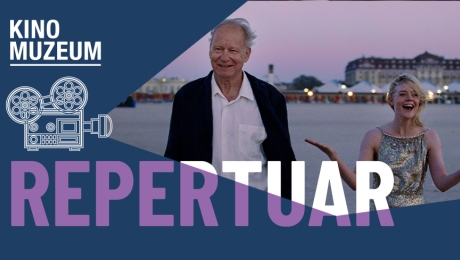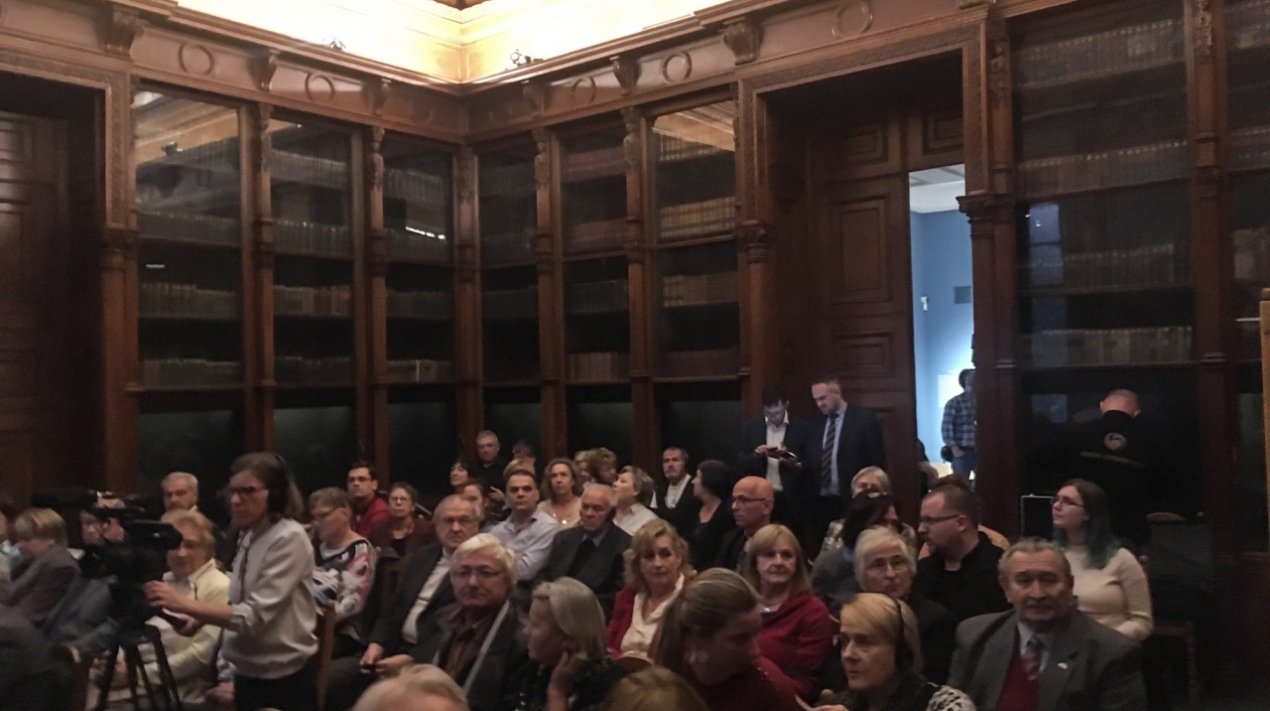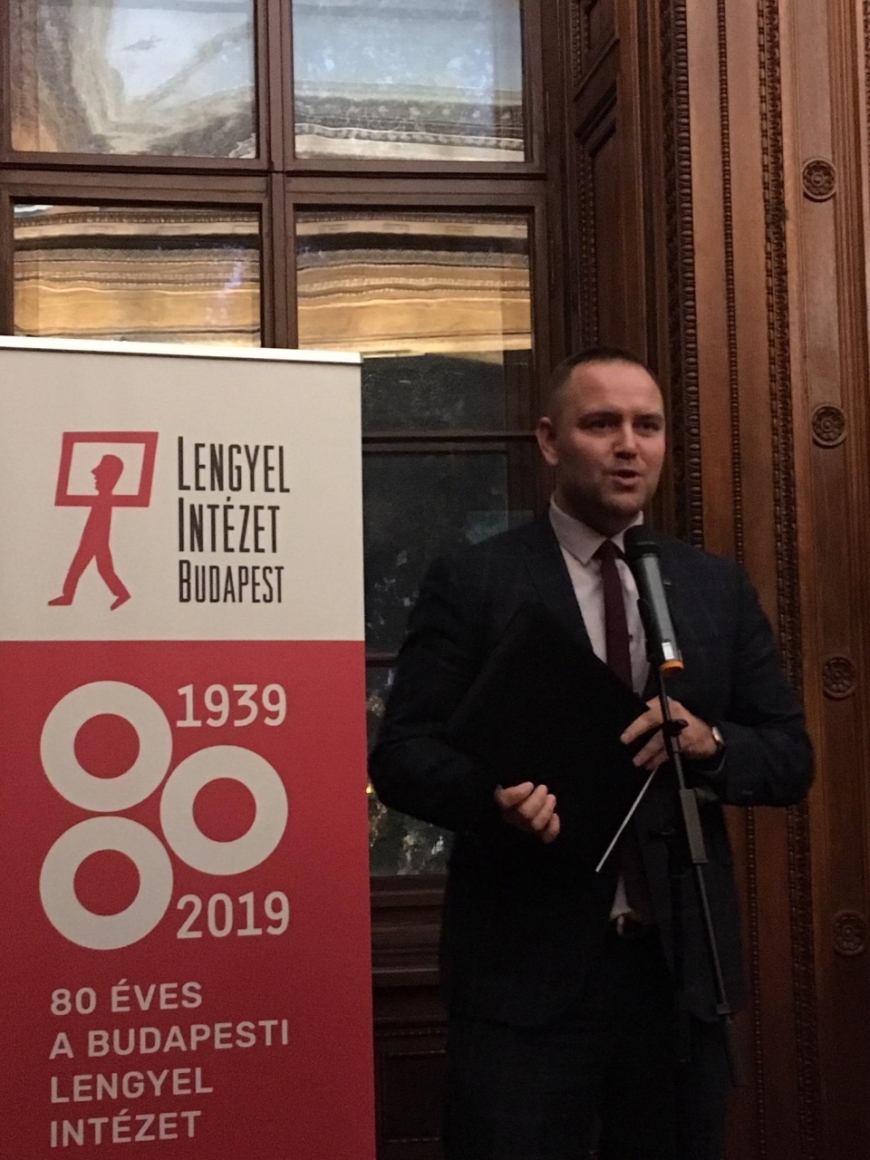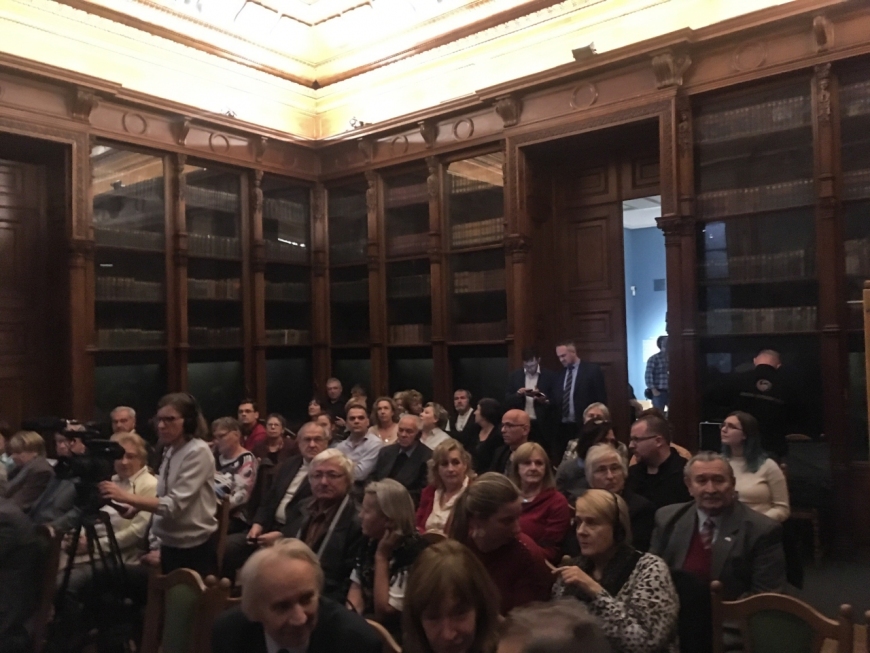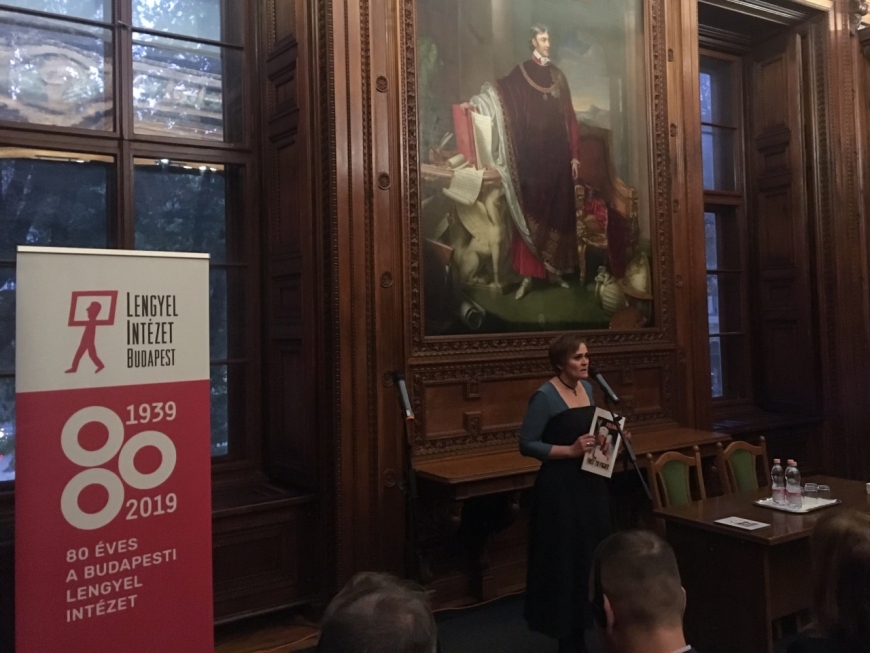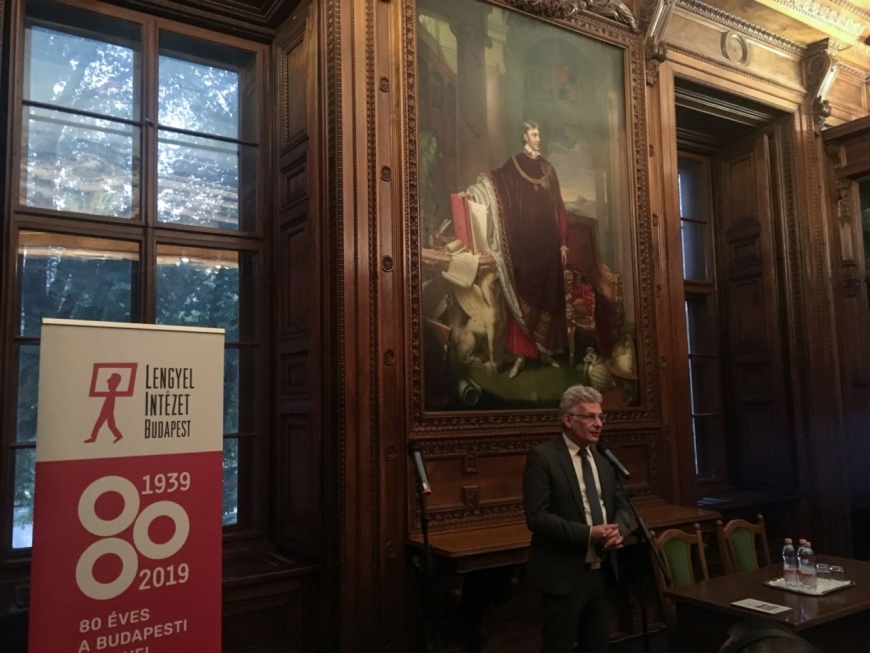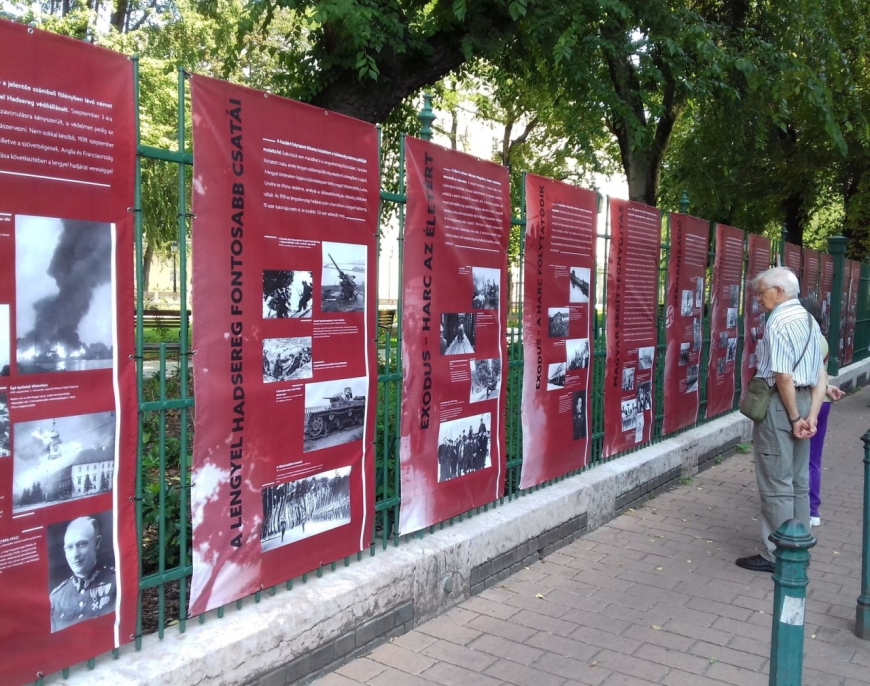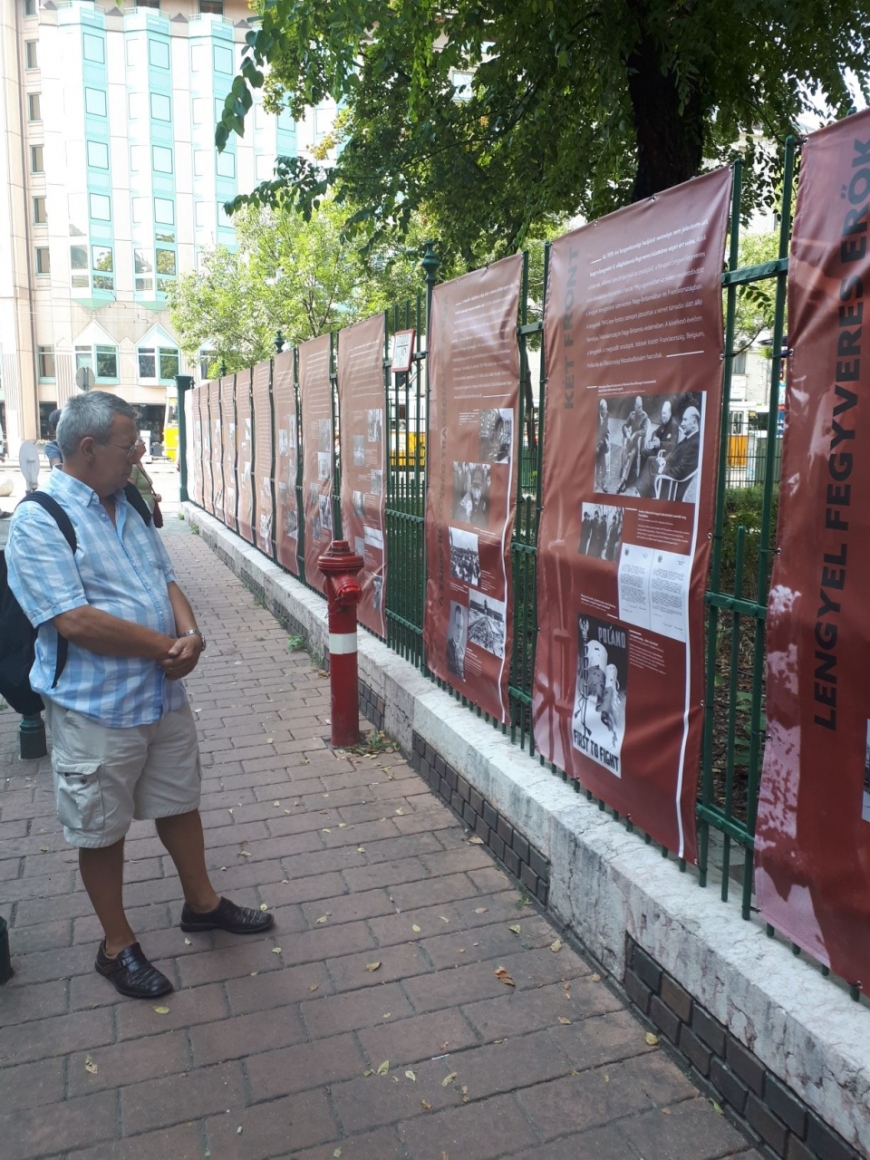Closing day of “Struggle and Suffering” Exhibition in Budapest
Official closing day of the “Struggle and Suffering” exhibition was held on the 14th of November 2019 at 4:00 PM at the Hungarian National Museum in Budapest. The exhibition was organised by the Polish Institute in Budapest. The event was held under the patronage of Zsolt Semjén, Hungary’s Deputy Prime Minister.
“Struggle and Suffering” is an international project carried out by the Museum of the Second World War in cooperation with the Ministry of Foreign Affairs of the Republic of Poland. The exhibition was presented in several dozen Polish institutions abroad, on 6 continents, in cities such as Washington D.C., Brasília, Mexico City, Edinburgh, Vienna, Belgrade, Jakarta, and Canberra. The exhibition is an attractively presented story about the Polish experience of the Second World War. It pays special attention to the tragedy of the war and the efforts of the Polish soldiers fighting for the independence of their homeland. Its aim was to provide information about the attitudes of Polish citizens in the face of the overwhelming force of the aggressors and then occupiers. The exhibition had been presented in Budapest from the 1st of September.
Guests were welcomed by the Chief Director of the Hungarian National Museum, Benedek Varga. The host stressed that the exhibition enjoyed great interest. It was located right next to the very popular tourist route, which enabled lots of people to visit it. He was followed by Joanna Urbańska, the Director of the Polish Institute in Budapest, who also paid attention to the high turnout amongst tourists, who had been visiting the exhibition for two months. Then, the floor was taken by Karol Nawrocki, PhD, Director of the Museum of the Second World War in Gdańsk, who spoke about the “Struggle and Suffering” project and about the Polish-Hungarian relations.
It’s always a breakneck attempt to compare sufferings. Hence, by presenting this exhibition in exactly 147 locations around the world so far, we did not intend to compete in the amount of pain, but we wanted to remind everyone that WW2 started on the 1st of September 1939 with shots on Westerplatte and was a result of a cooperation between two, equally brutal, totalitarian systems. I feel and I know, that I will find understanding in you here in Budapest, in Hungary, when it comes to the two totalitarian systems, but we should still be all aware that it’s not obvious in other parts of Europe and the world. Sometimes, this responsibility for the war crimes is attributed asymmetrically between the two criminals: Hitler and Stalin, and there’s a certain dissonance between the two systems arising, naturally, from numerous details. (...) I feel it is my very pleasant obligation to refer to the Polish-Hungarian relations during WW2. (...) Thanks to the decision of the great Polish friend, Prime Minister Pál Teleki, Hungarian borders were opened to Poles on the 18th of September 1939. As a result ca. 100,000 people found refuge.
Finally, Károly Kapronczay, PhD, delivered a speech “Polish Refugees on the Hungarian Soil during the Second World War”. He presented support provided by the Hungarians for the Poles looking for refuge during WW2. What’s important, Hungary provided aid not only for the army, but for the civilians as well.









